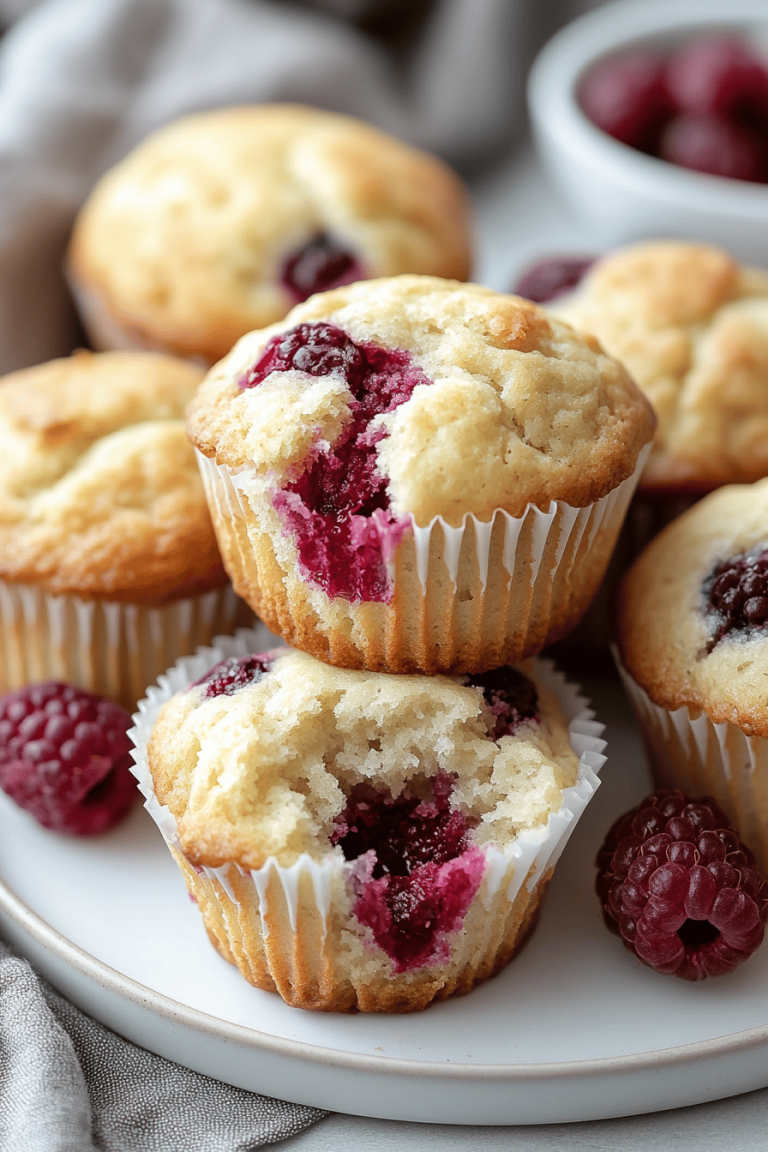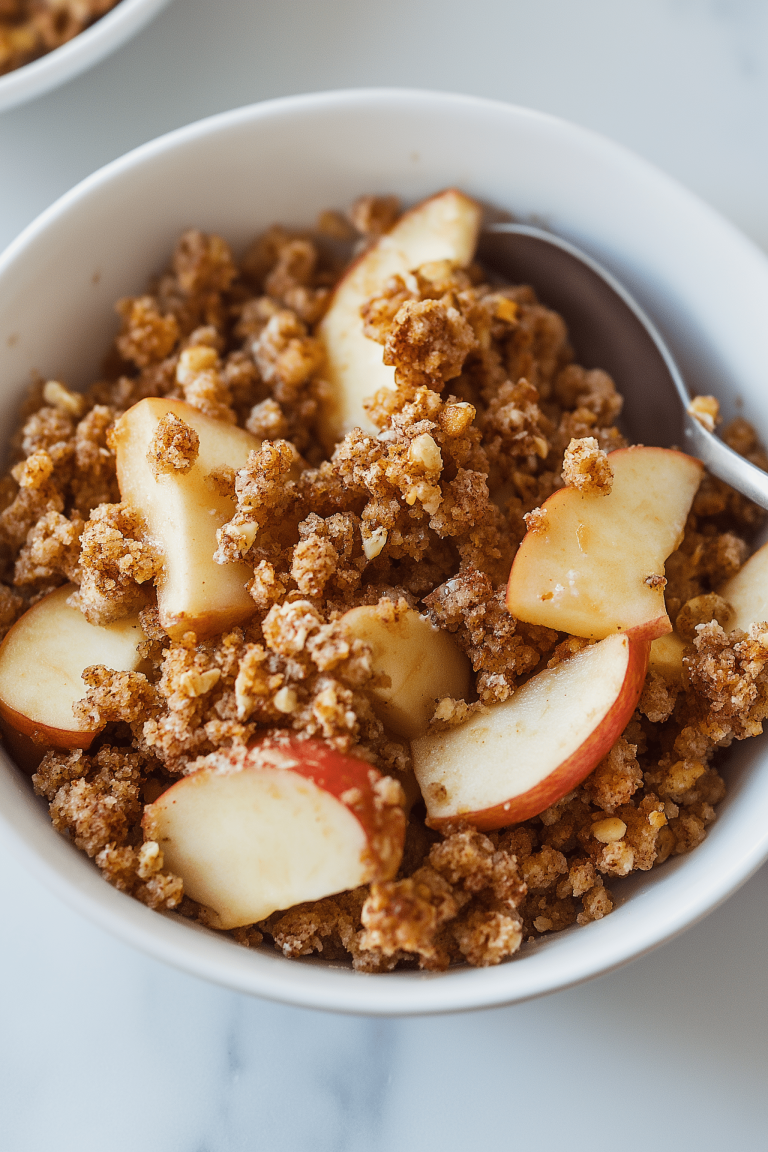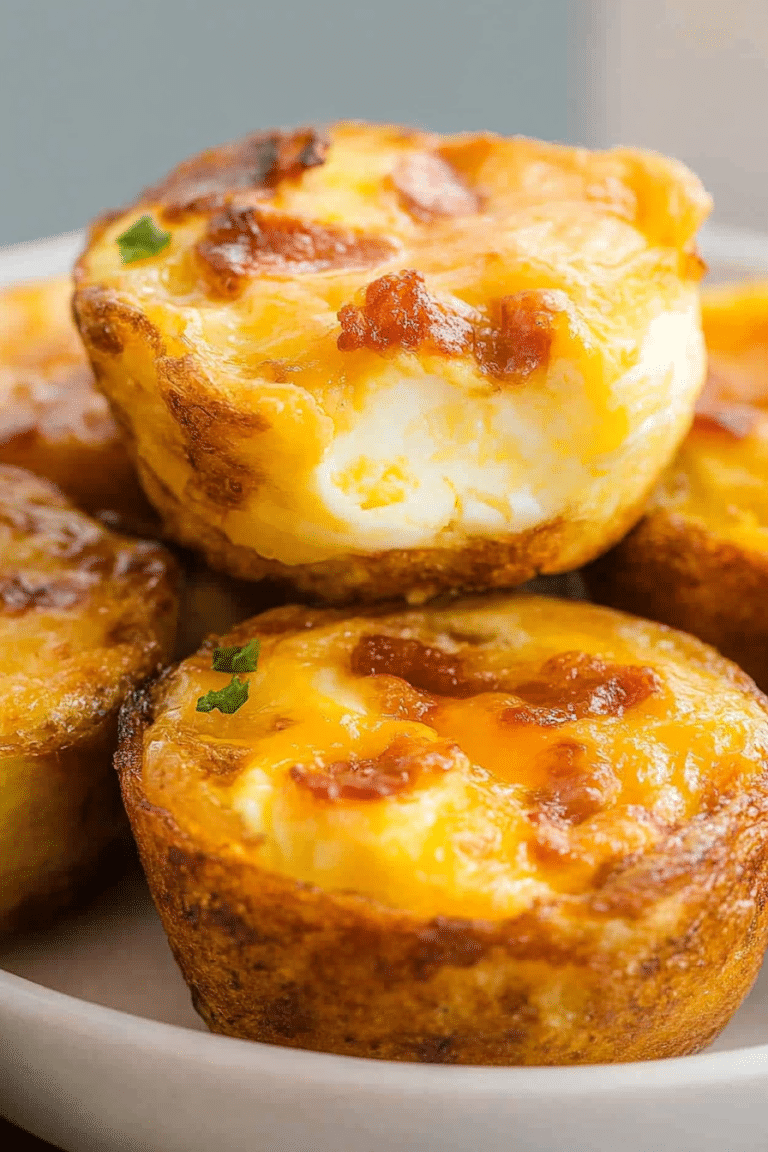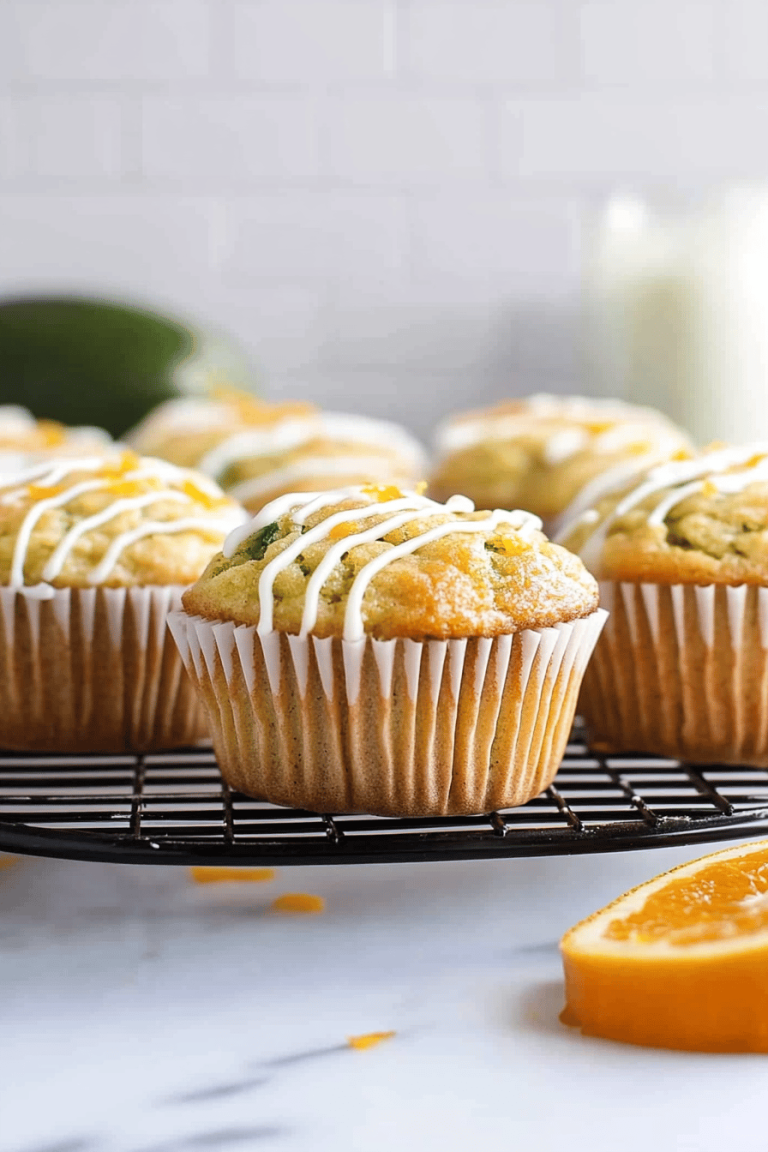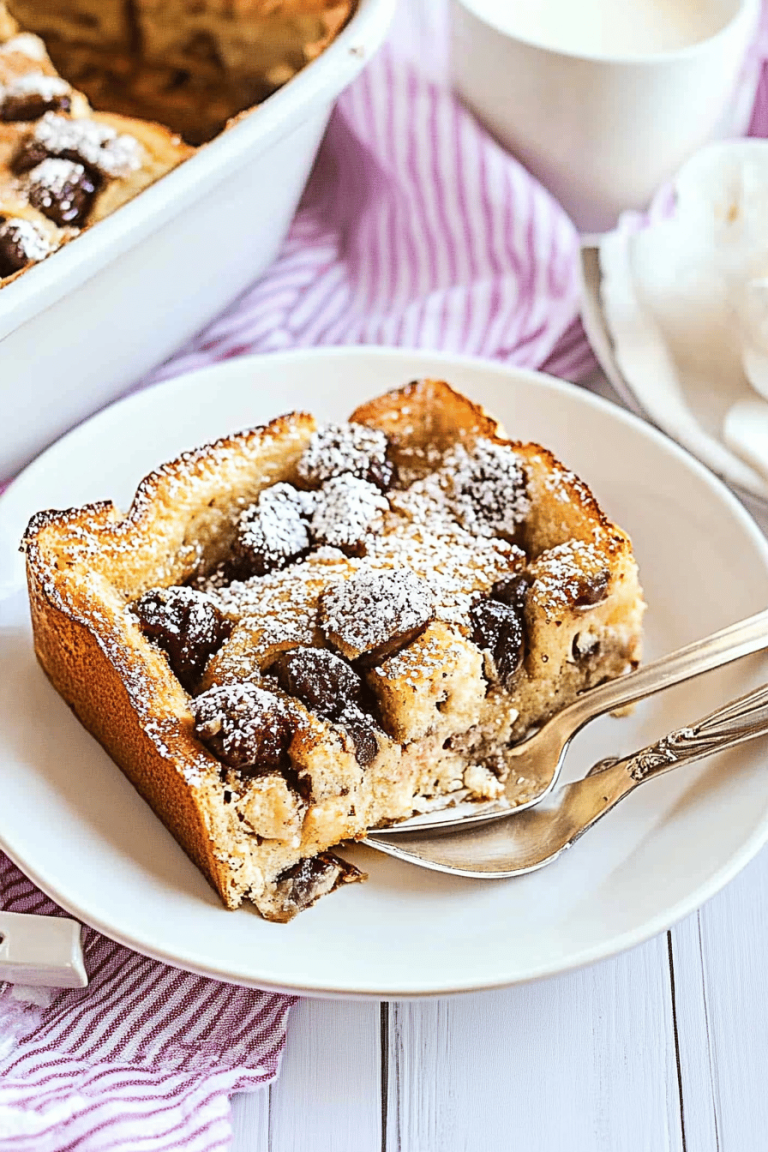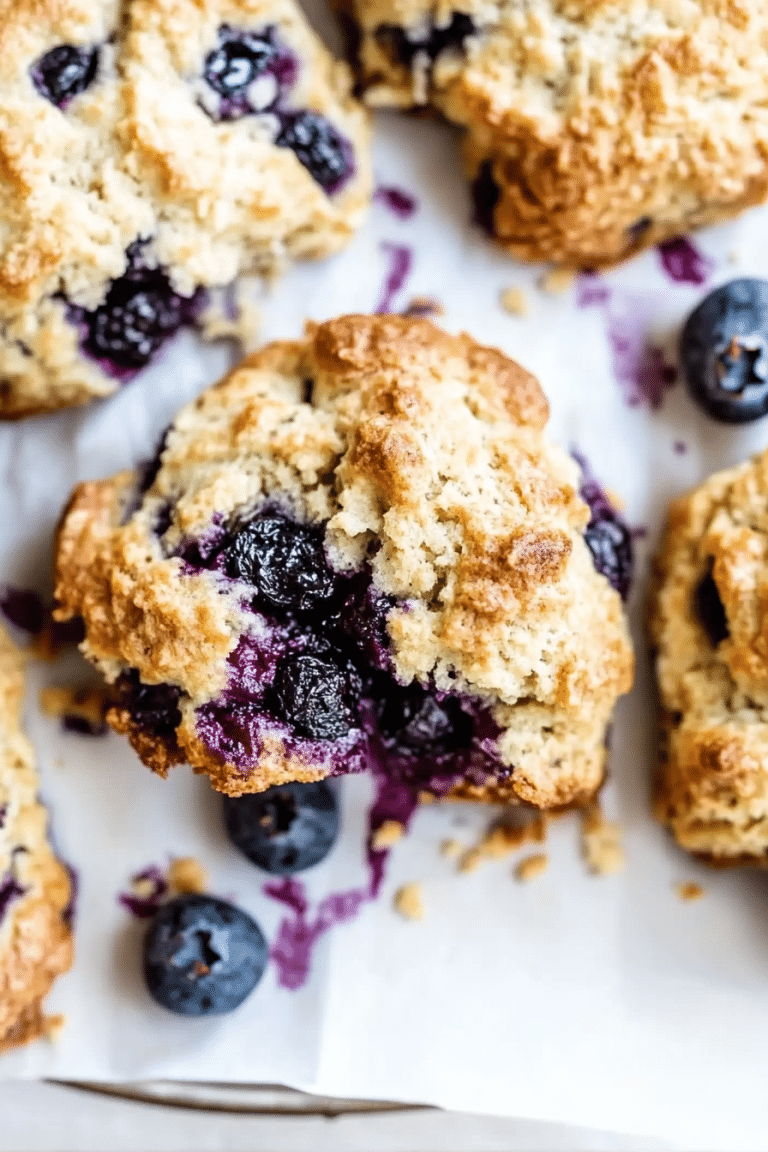Scotch Eggs Recipe
Okay, friends, gather ’round because I’m about to share a recipe that’s been a family favorite for, well, forever! Think of a hard-boiled egg nestled in savory sausage, coated in crispy breadcrumbs, and fried to golden perfection. It’s like a flavor explosion in every bite, seriously! Scotch eggs, in my opinion, are even more satisfying than a regular Deviled Egg – that satisfying crunch with the creamy yolk? Unbeatable. And while they might *seem* intimidating, trust me, this Scotch Eggs Recipe is surprisingly easy to master. You’ll be making these for brunch, picnics, and everything in between before you know it!
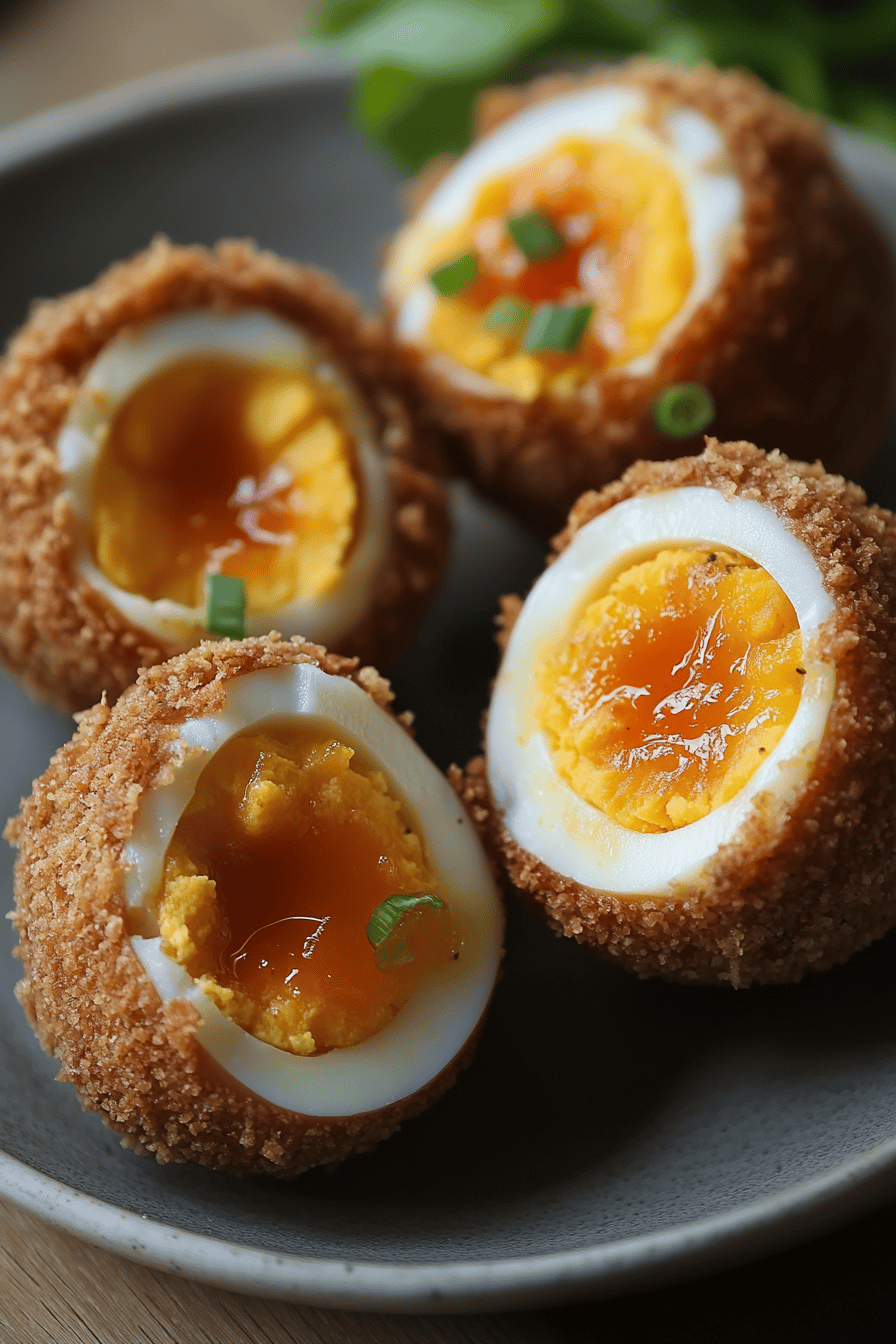
What are Scotch eggs?
So, what exactly *are* Scotch eggs? Well, simply put, they’re hard-boiled eggs that are wrapped in sausage meat, coated in breadcrumbs, and then deep-fried (or sometimes baked). Think of it as a savory, portable snack or a hearty addition to a brunch spread. The name itself is a bit of a mystery, but the general consensus is that they originated in London, not Scotland! It’s essentially the perfect blend of textures and flavors: the creamy yolk of the egg, the savory sausage, and the crunchy breadcrumb coating. What’s not to love? They make a surprisingly satisfying snack, trust me. I’ve even been known to eat them cold straight from the fridge!
Why do I love this recipe?
What are some good reasons to love Scotch Eggs Recipe? What are the few things that really stand out?
• Flavor:Oh, the flavor! The combination of the rich, savory sausage with the perfectly cooked egg is just divine. Is there a balance of textures and tastes that’s hard to beat? I always add a little bit of spice to my sausage mixture for an extra kick.
• Simplicity:What are some of the best recipes to make with a fancy name? Yes, there are a few steps involved, but each one is straightforward, and the end result is totally different. Is it worth the effort to read How easy it is to learn a technique?
• Cost-What are Scotch eggs? What are some great ways to use up leftover sausage meat? What do you need to get something special without breaking the bank?
• Versatility:Scotch eggs are versatile. What are some great breakfast recipes? Can you customize the flavor by adding different spices to the sausage meat? What are the different types of breadcrumbs I tried it once with panko breadcrumbs for extra crunch and they were amazing!
What I love about this recipe is how much my family enjoys it. What is the perfect snack for brunch? Plus, they’re always a hit at parties! They’re definitely not something you make every day, but they are perfect for when you want to. What is the best way to treat yourself to something truly delicious?
How do you make Scotch eggs?
Quick Overview
What is the best way to make Scotch eggs? What are manageable steps First, you’ll need to hard boil your eggs. What is the fun part? How do you wrap an egg in sausage mixture? Is it possible to fry breadcrumbs in a pan until golden brown? What’s the best part about my method is ensuring a perfectly cooked yolk every time. I’ve fine tuned the timing for maximum gooey-ness!
Ingredients
For the Eggs:
• 6 large eggs – I prefer free-range for the richer flavor and vibrant yolks.
• Ice water – for shocking the eggs and stopping the cooking process, essential for easy peeling.
For the Sausage Mixture:
• 1 pound ground pork sausage – Look for a good quality sausage with satiety and fat; It adds flavor and moisture.
• 1 teaspoon salt – Enhances the flavor of the sausage.
• ½ teaspoon Black Pepper – Adds a bit of spice.
• 12 teaspoon dried sage – Gives a classic savory flavor.
• 14 teaspoon nutmeg – Adds a warm, subtle sweetness.
• 1 tablespoon chopped fresh parsley – For a touch of freshness and color.
For the Coating:
• 1 cup all-purpose flour – For dredging the eggs, helps the breadcrumbs stick.
• 2 large eggs, beaten – Creates a wet layer for the breadcrumbs to adhere to.
• 2 cups breadcrumbs – I like using panko bread for extra crunch, but regular Breadcrumbs work too.
• Vegetable oil – For deep frying. Canola or peanut oil also work well.
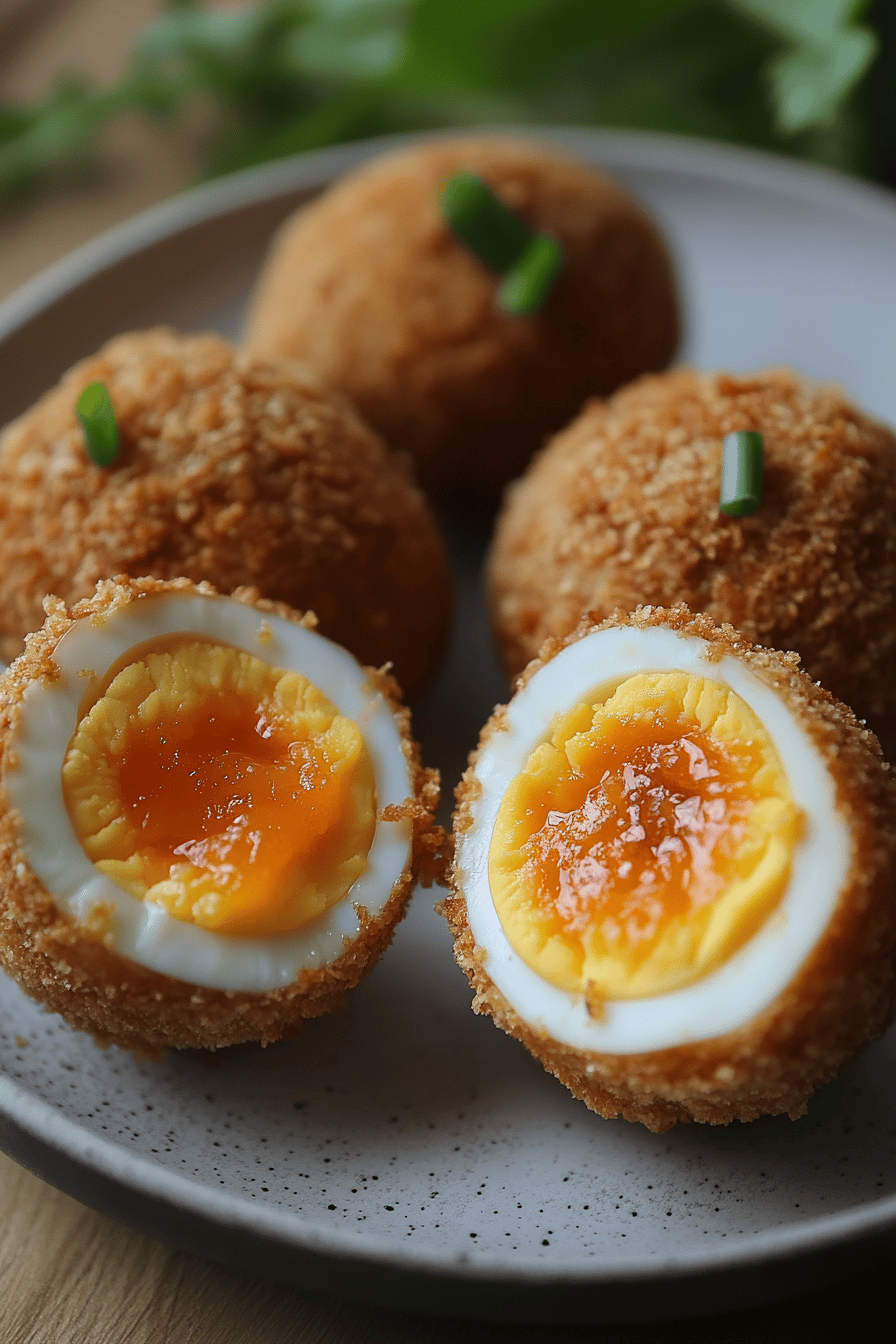
What are the steps to
Step 1: Hard-Boil the Eggs
Place the eggs in a saucepan and cover them with cold water. Bring the water to a boil over medium-high heat. Once boiling, turn off the heat, cover the pan, and let the eggs sit for exactly 6 minutes for a lovely runny yolk, or 8 minutes for a firmer yolk. Immediately transfer the eggs to a bowl of ice water to stop the cooking process. This step is crucial for preventing that dreaded green ring around the yolk! Let them cool completely before peeling. I always peel them under cold running water – it makes the process so much easier.
Step 2: Prepare the Sausage Mixture
In a large bowl, combine ground sausage, salt, pepper, sage, and parsley. Set aside. Mix well with your hands until everything is evenly distributed. Do not overmix sausages, as this can make them tough. I always do a taste test of the raw sausage mixture to make sure the seasoning is just right. Remember, you can always add more, but you cannot take it away!
Step 3: Peel the Eggs
Gently peel the cooled eggs. How do you tap an egg lightly on a hard surface to create small cracks all over the shell? How do you use cold running water? How does the water separate the egg from the shell? Be careful not to damage the eggs while peeling! I find that starting at the larger end of the egg works best.
Step 4: Assemble the Scotch Eggs
Divide the sausage mixture into 6 equal portions. What is the best way to flatten a disc in the palm of your hand? Place a peeled egg in the center and gently mold the sausage around the egg. Is there a Repeat with the remaining eggs and sausage mixture. This can get messy, but it’s all part of the fun! I like to keep my hands slightly damp to prevent the sausage from sticking.
Step 5: Prepare the Breading Station
Set up a breading station with three shallow dishes. In the first dish, place flour. In the second dish, beat the eggs and in the third, place the breadcrumbs. This assembly line will make the breading process much smoother. I always make sure to have a separate set of hands for the wet and dry ingredients to avoid sucking.
Step 6: Bread the Scotch Eggs
How do you roll a sausage-wrapped egg in flour? If you have beaten eggs, dip it in the egg and let it drip off. How do you roll breadcrumbs into a ball? Repeat the egg and breadcrumb coating for a thicker, crispier crust, if desired. Double coating is my secret weapon for crunch! Make sure to coat the eggs evenly to ensure even browning during frying.
Step 7: Fry the Scotch Eggs
Pour enough vegetable oil into a deep pot or Dutch oven to reach a depth of about 3 inches. Heat the oil over medium heat to 325°F (160°C). Carefully lower the breaded Scotch eggs into the hot oil, one or two at a time, making sure not to overcrowd the pot. Fry for about 6-8 minutes, turning occasionally, until golden brown and crispy on all sides. Use a slotted spoon to transfer the Scotch eggs to a wire rack lined with paper towels to drain excess oil. The oil temperature is crucial here – too hot, and the outside will burn before the inside is cooked; too cold, and the eggs will absorb too much oil.
Step 8: Serve
Let the Scotch eggs cool slightly before slicing in half and serving. Is it good to eat them warm or at room temperature? I love to serve them with a dollop of Dijon mustard or chutney for dipping. What are some good side dishes to serve with a green salad? Is it possible to eat them all on their own?
What should I serve it with?
Scotch eggs are incredibly versatile, which is one of the reasons I love them so much. What are some good ways to serve a dinner to someone who is just starting out, depending on the occasion?
For Breakfast:A side of crispy bacon or sausage, some grilled tomatoes, and a slice of sourdough toast. Don’t forget a cup of strong coffee or orange juice! I love to serve them with a hollandaise sauce for an extra-indulgent breakfast.
For Brunch:A colorful fruit salad, a selection of cheeses and crackers, and sparkling wine or sparkling water. Scotch eggs are the perfect addition to any brunch spread. I like to arrange them on a platter with some fresh herbs for an elegant presentation.
As a Snack:What are the best side dishes to serve with Dijon mustard and mayo? What are some great side dishes to serve with pickles or olives? What are some healthy side dishes to serve with hummus and crudités?
For a light dinner: A simple green salad with a vinaigrette dressing, some crusty bread, and a glass of chilled white wine. Scotch eggs are surprisingly filling, so they make a great light dinner option. I often pair them with a soup during the cooler months.
Growing up, my mom always served Scotch eggs with a side of her homemade tomato relish. It’s a family tradition that I still carry on today. The sweetness of the relish perfectly complements the savory flavor of the eggs.
Top Tips for Perfecting Your Scotch Eggs
Over the years, I’ve learned a few tricks that will help you make the perfect Scotch eggs every time:
Egg Doneness: For that perfect runny yolk, cook your eggs for exactly 6 minutes. If you prefer a firmer yolk, cook them for 8 minutes. The timing is crucial, so set a timer! And don’t forget to shock them in ice water immediately after cooking to stop the cooking process. I usually do a test egg just to be sure.
Sausage Selection: Choose a good quality sausage with a decent amount of fat. The fat adds flavor and moisture, preventing the sausage from drying out during frying. You can also experiment with different types of sausage, such as Italian sausage or chorizo. I’ve even tried using a mixture of pork and beef sausage for a richer flavor.
Breading Technique: Make sure to coat the eggs evenly with flour, egg, and breadcrumbs. This will ensure that the breadcrumbs adhere properly and that the Scotch eggs are crispy on all sides. For an extra-crispy crust, double coat the eggs in egg and breadcrumbs.
Frying Temperature: Maintain a consistent oil temperature of 325°F (160°C). This will ensure that the Scotch eggs cook evenly and that the outside doesn’t burn before the inside is cooked. Use a deep-fry thermometer to monitor the oil temperature. If the oil gets too hot, reduce the heat; if it gets too cold, increase the heat.
Avoid Overcrowding: Don’t overcrowd the pot when frying the Scotch eggs. Frying too many at once will lower the oil temperature and result in soggy eggs. Fry them in batches of one or two.
One mistake I made early on was not letting the eggs cool completely before peeling them. This resulted in mangled eggs and a lot of frustration. Trust me, patience is key! Another lesson I learned the hard way was not using enough sausage meat to cover the eggs completely. This led to cracks in the sausage coating and oil seeping in during frying. Now I always make sure to use a generous amount of sausage meat.
Storing and Reheating Tips
If you have leftover Scotch eggs (which is rare in my house!), here’s how to store and reheat them:
Room Temperature: Scotch eggs can be left at room temperature for up to 2 hours. After that, they should be refrigerated or frozen. Make sure to cover them to prevent them from drying out.
Refrigerator Storage: Store Scotch eggs in an airtight container in the refrigerator for up to 3 days. They’re best eaten cold or reheated. I usually put them in a glass container to keep them as fresh as possible.
Freezer Instructions: To freeze Scotch eggs, wrap them individually in plastic wrap, then place them in a freezer-safe bag or container. They can be frozen for up to 2 months. Thaw them in the refrigerator overnight before reheating. I prefer to freeze them before frying; this way, they taste freshly fried when I’m ready to eat them.
Reheating Instructions: To reheat Scotch eggs, you can bake them in a preheated oven at 350°F (175°C) for about 10-15 minutes, or until heated through. You can also microwave them for a minute or two, but they may become slightly soggy. For the best results, reheat them in a skillet with a little bit of oil over medium heat, turning occasionally, until heated through and crispy.
Frequently Asked Questions
Final Thoughts

So, there you have it – my ultimate Scotch Eggs Recipe! I hope you’ll give it a try and experience the joy of biting into that crispy, savory, and gooey deliciousness. Trust me; once you’ve mastered this recipe, you’ll be making them for every occasion! They’re truly a crowd-pleaser and a fun way to impress your friends and family. If you’re a fan of savory snacks and egg-centric dishes, you might also want to check out my recipe for Deviled Eggs or breakfast burritos!
Happy cooking, and I can’t wait to hear how yours turn out! Don’t forget to leave a comment below and let me know if you tried this recipe and what you thought. And if you made any fun variations, be sure to share them with me. Happy baking!

